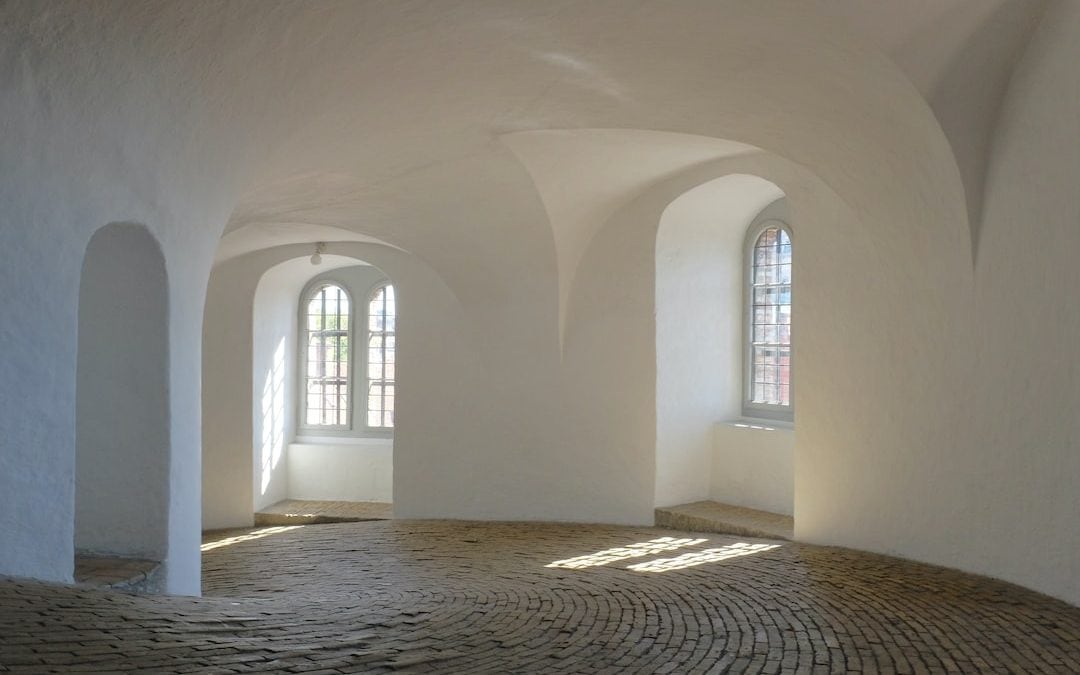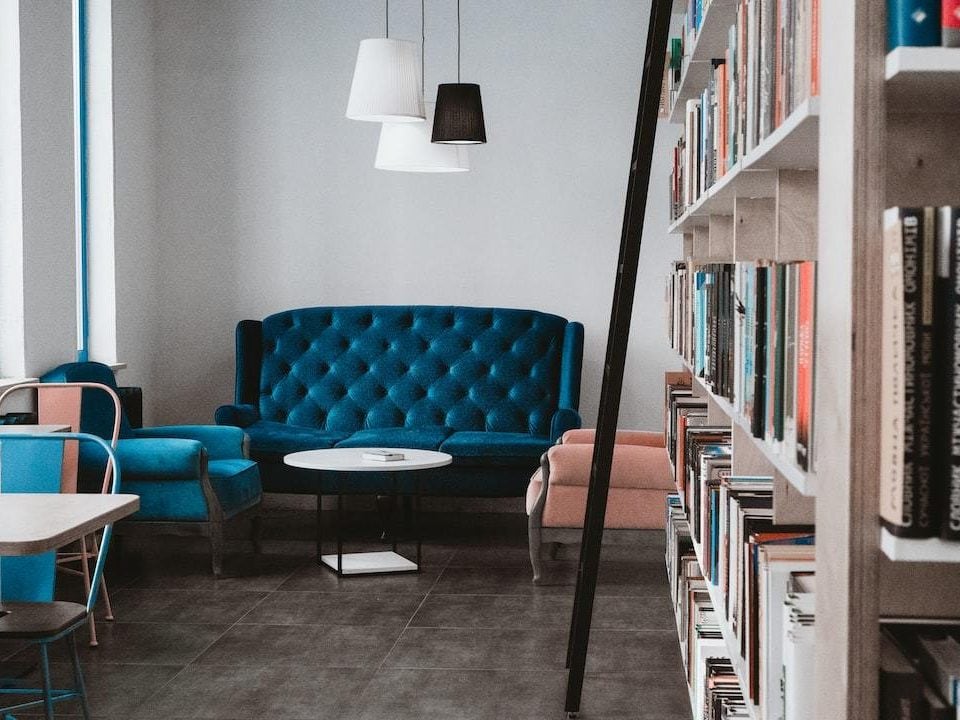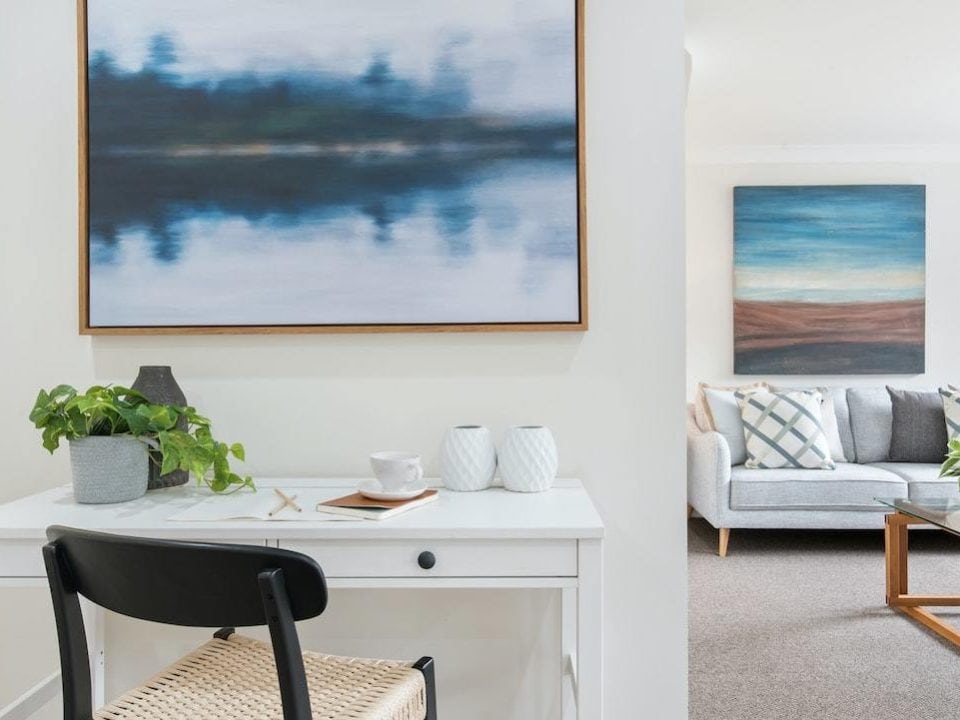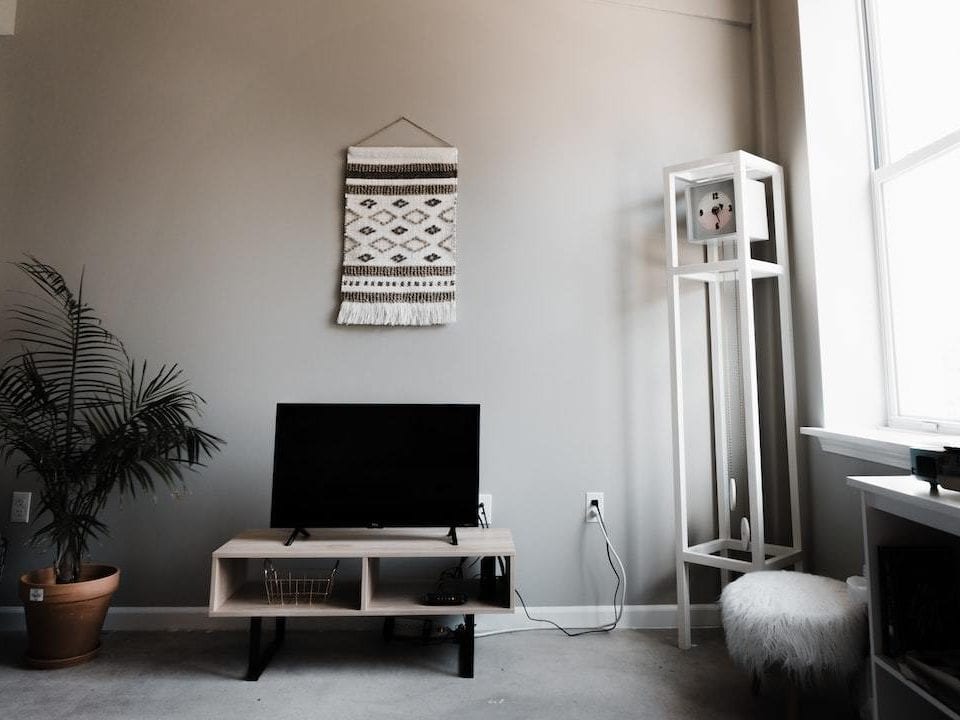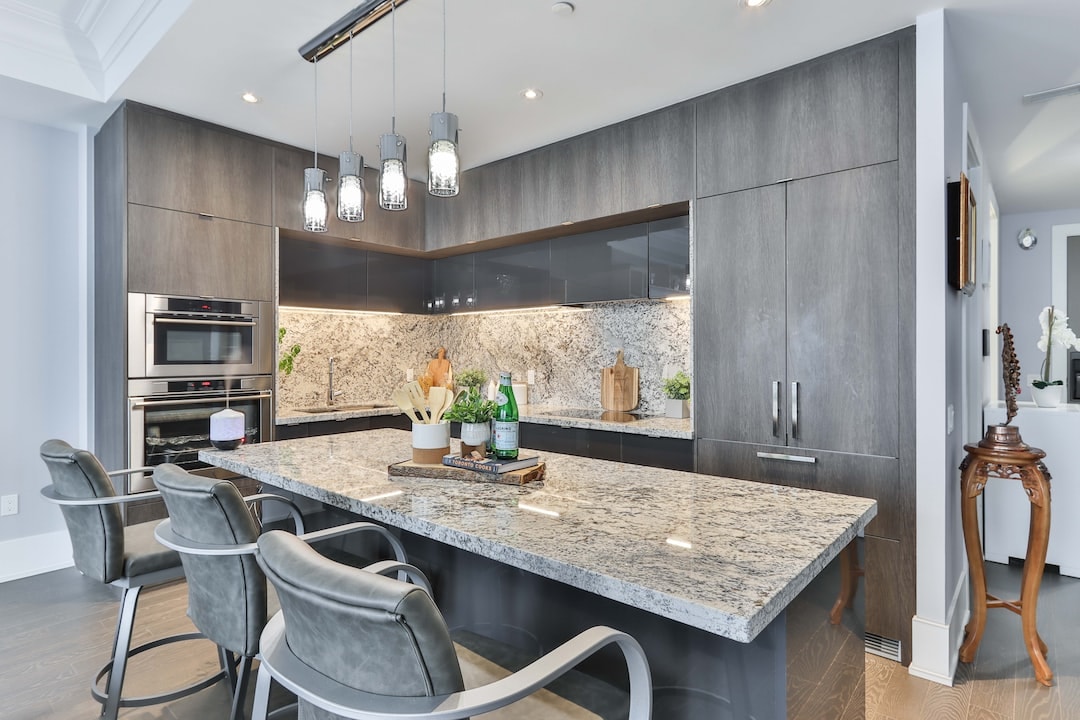
How Much Does It Cost To Paint A Condo Interior?
April 6, 2023
Does Interior House Paint Expire? Shelf Life and Tips
May 9, 2023Figuring out the amount of paint needed for a house interior can be complicated, as various elements contribute to the final cost. In this comprehensive guide, we will delve into each step of an interior painting project and provide valuable insights to help you make informed decisions regarding your home’s transformation.
We will begin by discussing essential preparations such as cleaning and repairing walls, removing wallpaper, and covering furniture and floors. Next, we’ll explore choosing paint colors by consulting color wheels, selecting schemes, and testing samples on walls.
Moving forward in our quest for estimating how much to paint the entire interior of a house accurately, we will examine purchasing supplies like brushes, rollers, trays, primer, paint quality/type (latex or oil-based), drop cloths & masking tape. Furthermore, we’ll explain applying primer correctly by mixing it with water and using appropriate tools.
Last but not least important are techniques for painting ceilings first, followed by wall sections from top-to-bottom & left-to-right while paying special attention to edges/corners; finishing touches including touch-ups; & proper cleanup methods that ensure the longevity of your beautiful new space!
Table of Contents:
- Estimating Interior Painting Costs
- Measuring Square Footage for Accurate Cost Estimation
- Importance of Wall Preparation in Painting Projects
- Factors Affecting Interior Painting Cost
- Professional Painter Pricing Breakdown
- Choosing the Right Paint Type & Quality
- Additional Expenses in Interior Painting Projects
- Tips to Save Money on Your Interior Painting Project
- FAQs in Relation to How Much to Paint the Entire Interior of a House
- Conclusion
Estimating Interior Painting Costs
To estimate the cost of an interior paint job, measure each room’s square footage. Painting your living spaces by yourself typically ranges from $1 to $3 per square foot; however, completing one room may take a day or two. Wall preparation is essential before starting any paint project – this includes cleaning stains and mildew using a cleaner degreaser followed by rinsing walls with clean water.
Measuring Square Footage for Accurate Cost Estimation
To accurately calculate the interior painting cost, you must determine the total square footage of all surfaces requiring painting. Multiply the length and width of each wall in every room, then add those values to get the total square footage of all surfaces requiring painting. Remember that doors and windows should be subtracted from the total surface area as they will not be painted.
- Example: A 12-foot-by-12-foot room has four walls, each measuring 144 square feet (12 x 12). The total surface area would be 576 square feet (144 x 4).
Importance of Wall Preparation in Painting Projects
A successful painting project starts with proper wall preparation. This process involves removing dirt, grease, and other contaminants from your walls before applying any paint. Skipping this step can lead to poor adhesion between the paint and the wall surface, which could result in peeling or flaking over time.
- Cleaning: Use a cleaner-degreaser to remove stains, grease, and mildew from your walls. This will ensure that the paint adheres properly and lasts longer.
- Rinsing: After cleaning, rinse the walls with clean water to remove any residue from the cleaning solution. Allow them to dry completely before proceeding with painting.
Considering these steps when planning your interior painting project, you can achieve professional results while staying within budget.
Calculating the expenditure for indoor painting is essential to guarantee that you acquire a superior job at a reasonable price. With this in mind, it’s essential to understand the various factors affecting interior painting costs before beginning any project.
Factors Affecting Interior Painting Cost
The total cost of painting a home’s interior depends on several elements, such as square footage, quality and type of paint used, labor charges and extra materials. On average, professional interior painting services can range from $3,500 to $10,000. Understanding these factors can help you make informed decisions about your painting project.
Paint Quality and Type Affecting Overall Expenses
Different types of paints come with varying price tags. For instance, oil-based paints are generally more expensive than latex paint but offer better durability in high-traffic areas like kitchens or bathrooms. The choice between different sheens – flat matte finish or semi-gloss – also impacts the final cost due to their unique properties and applications.
- Latex Paint: This water-based paint is easy to clean up after application and dries quickly. It suits most home interiors but may not be ideal for high-moisture areas.
- Oil-Based Paints: These provide a durable finish that resists moisture well; however, they take longer to dry than latex paints.
- Semi-Gloss Finish: Offers moderate shine while being easier to clean than flat finishes making it perfect for living rooms or bedrooms where dirt accumulates easily.
- Glossy Finish: Provides maximum shine, which enhances light reflection creating an illusion of space; best suited for smaller spaces like bathrooms or hallways.
Labor Costs Impacting Final Price
The majority of the interior painting cost comes from labor expenses. Professional painters usually charge based on the square footage of your home, and their rates may vary depending on factors like location, experience level, and project complexity. It’s essential to compare quotes from multiple painters before deciding which one is best suited for your needs.
- Experience Level: More experienced painters tend to charge higher fees but can complete projects faster with better results.
- Location: Painters in urban areas or regions with a high cost of living generally have higher rates than those in rural areas or smaller towns.
Add-On Services & Materials Affecting Costs
In addition to paint quality and labor costs, other factors that affect the overall interior painting cost include additional materials such as brushes, rollers, painter’s tape, drop cloths, etc., and any add-on services you might require, like wall repairs or trim work. Be sure to discuss these potential extra expenses upfront with your chosen professional painter so there are no surprises when it comes to payment.
- Add-On Services: Examples include wallpaper removal or repairing damaged walls before painting; these will increase the final price of your project.
- Additional Materials: The type and quantity of materials needed (e.g., brushes) will also impact the total cost – make sure they’re factored into any estimates provided by prospective contractors.
Overall, the quality of paint and labor costs are two important factors to consider when estimating the cost of interior painting. Moving on, professional painters offer different pricing based on specific areas within a home that can be compared with DIY projects.
Professional Painter Pricing Breakdown
Engaging a pro painter to paint the inside of your abode can be advantageous, as it may spare you time and exertion while guaranteeing an excellent outcome. However, understanding how painters charge for their services is crucial to budget accordingly. This section will discuss the various factors that affect pricing when hiring a professional painter.
Different Pricing Based on Specific Areas Within the Home
Professional painters usually charge based on square footage; however, different areas within your home may have varying costs due to complexity and size. For example:
- Bathrooms typically cost around $1-$4 per sq ft due to their smaller size and intricate details.
- Larger kitchens could incur fees up to $200-$400 depending on the number of cabinets and overall layout.
- Ceilings in rooms with multiple colors or designs may range from $150-$350 for an average 12-foot-by-12-foot space.
- Stairways, closets, pantries, nooks, and hallways are relatively easy spaces that tend to be fairly basic in paint job requirements; hence, prices differ widely but remain within reasonable margins.
Comparing DIY vs Hiring Professionals
If you’re considering whether to tackle your interior painting project yourself or hire professionals like those at our Portland-based company ESP Painting, there are several factors worth considering:
- A DIY approach can save money upfront but might take longer than anticipated if inexperienced with such tasks – potentially leading to additional expenses due to mistakes made during the process. On the other hand, hiring skilled workers ensures efficient, timely completion of work without any hassle extra expenditure caused by errors along the way. The quality of work done by professionals is generally higher than that of a DIY project, as they have the experience and expertise to ensure a smooth finish.
- Professional painters possess the knowledge to utilize a variety of paint types, including latex and oil-based paints, guaranteeing an optimal outcome for your residence’s particular requirements.
In conclusion, while both options have pros and cons, ultimately, decisions should be based on personal preferences and budget constraints.
Considering the cost of a professional painter is essential to settle on what’s best for your painting task. However, choosing the right paint type and quality can also significantly impact the success of your interior house painting job.
Choosing the Right Paint Type & Quality
When shopping for house paint, it’s essential to consider the product’s type and quality. Higher-quality paints may be more expensive but offer better coverage, durability, and overall appearance. When it comes to your house, you should pick a finish that meets its specific requirements when selecting the right paint.
Benefits of High-Quality Paint Products
- Durability: High-quality paints are designed to withstand wear and tear over time, ensuring that your walls remain fresh for longer.
- Coverage: Premium paints often have better pigmentation and consistency, allowing them to cover surfaces more effectively with fewer coats. This can result in savings of time and resources over the long haul.
- Ease of application: Top-tier products typically apply smoother than lower-priced alternatives, making it easier for DIYers and professional painters to achieve an even finish without streaks or brush marks.
- VOC levels: Many high-quality paints now come with low or zero volatile organic compounds (VOCs), harmful chemicals released into the air during painting. By choosing paints with low or zero VOCs, you can protect your health and contribute to environmental protection. [source]
Selecting the Appropriate Paint Finish for Your Home
The right paint finish depends on factors such as room function, personal preference, and desired aesthetics. Here are some common types of finishes, along with their pros and cons:
- Flat or matte: This finish has no sheen and hides wall imperfections. This type of finish is best utilized in areas with minimal activity, such as bedrooms and dining rooms.
- Eggshell: Offering a subtle sheen, eggshell finishes are more durable than flat paints and can be easily cleaned. Hallways, living areas and bedrooms are ideal spots for this paint finish.
- Satin: With a smooth finish that reflects light gently, satin paint is perfect for high-traffic areas like kitchens, bathrooms, and playrooms due to its durability and ease of cleaning.
- Semi-gloss: Semi-gloss paints have a shiny appearance that adds depth to surfaces while being easy to clean. They’re commonly used on trim work, doors, cabinets, and occasionally walls in kitchens or bathrooms.
- Glossy: High-gloss finishes shine the most and highlight surface imperfections. These are typically reserved for accent pieces such as furniture or decorative moldings rather than entire walls.[source]
A typical price tag for an apartment painting project using high-quality products ranges from approximately $2,150 – $4,600, depending on factors like complexity and home size[source]. If you want to save money without sacrificing quality results,
Choosing the right paint type and quality is essential to achieving a professional finish. Considering that, it’s important to consider additional expenses associated with interior painting projects, such as wall preparation materials and primer application costs.
Additional Expenses in Interior Painting Projects
When planning an interior painting project, it’s essential to consider the additional expenses that may arise. Wall preparation and primer application are two crucial factors that can significantly impact your overall costs. Having knowledge of these elements can help you make wise choices regarding your painting project, ensuring a polished and professional result.
Cost of Wall Preparation Materials
In addition to the cost of the paint itself, wall preparation materials such as brushes, rollers, pans, painter’s tape, and drop cloths will also contribute to your total expenditure. On average, wall prep alone can add between $0.50 and $0.75 per square foot expenses for these items.
To save money on wall preparation materials without compromising quality or efficiency, follow expert tips on selecting the right tools for each task within your painting project.
Primer Application Costs and Benefits
The use of primer is another factor that increases overall expenditure but might not be required when painting over similar types of existing finishes. To determine whether a primer is necessary for your specific situation,
- Analyze the surface condition: If there are stains or uneven colors on the walls or if you’re transitioning from dark to light shades,
- Evaluate paint type compatibility: When switching from oil-based paints to latex paints (or vice versa), a primer helps create better adhesion between different layers.
To determine the number of gallons necessary for a single coat, multiply your surface area (in square feet) by 400. This will give you the number of gallons required for one coat.
Remember that while applying a primer may increase your initial costs, it can also improve paint adherence and durability, saving you money on potential touch-ups or repainting in the long run.
Considering the cost of wall preparation materials and primer application, it is important to consider these additional expenses when planning an interior painting project. Additionally, there are ways to save money on your interior painting project by comparing quotes from different painters or doing DIY work yourself.
Tips to Save Money on Your Interior Painting Project
To ensure you get the desired results for your interior painting project without breaking the bank, consider saving money by doing it yourself or hiring professionals. In this part, we’ll review various approaches to save cash while still accomplishing an expert look for your house.
DIY vs Hiring Professionals to Save Money
If you have some experience in painting or are willing to learn, tackling the painting project yourself can be an excellent way to save money. By doing it yourself, you can eliminate labor costs and only pay for paint and materials. However, due to a lack of expertise and equipment, DIY projects may take longer than hiring professionals.
In contrast, hiring a professional painting company ensures high-quality work but comes at a higher cost. To find the best balance between quality and affordability when hiring professionals:
- Request quotes from multiple painters before making a decision.
- Negotiate pricing based on square footage or hourly rates.
- Determine if any additional services are included (e.g., wall preparation).
Comparing Quotes from Different Painters
To ensure that you get competitive prices for your interior painting job without compromising quality:
- Gather at least three different quotes from reputable painters in your area.
- Evaluate each quote by comparing factors such as price per square foot, materials used (latex paint vs oil-based paints), and estimated completion time.
- Read online reviews or ask for references to ensure the painter has a good reputation for delivering quality work within the agreed timeframe.
Following these tips can save money on your interior painting project while still achieving professional results. Investing in high-quality paint and proper wall preparation will help ensure a long-lasting finish, ultimately saving you more money in the long run by reducing the need for frequent touch-ups or repainting.
FAQs in Relation to How Much to Paint the Entire Interior of a House
How do I estimate the interior paint of my house?
Estimating the interior paint of your house requires careful consideration. It is important to factor in the size and condition of the walls, ceiling, trim, doors, windows and any other areas that need painting. In addition, you must consider the number of layers needed for an optimal finish and what primer and sealant will be employed. Finally, labor costs must also be considered when estimating an interior paint job. With all these factors considered, it is possible to estimate the cost of your interior painting project accurately.
How many gallons of paint do I need for a 3000 square foot house interior?
The amount of paint needed for a 3000-square-foot house interior depends on the surface area being painted and how many coats are required. Generally, one gallon of paint covers approximately 400-450 square feet with two coats. Therefore, you would need 6 to 7 gallons of paint to cover the space with two coats. It is important to consider any special requirements, such as wall repairs or priming, that may require the additional product. Professional painters can provide an accurate estimate based on your specific project needs.
How long does it take to paint a 1500 sq ft house interior?
It typically takes a professional painter between 3-4 days to paint the interior of a 1500 sq ft house. The exact time frame depends on the job’s complexity, such as how many walls need painting and if any special finishes are requested. It is important to note that preparation work, like patching holes or sanding surfaces, can add additional time to this estimate. To ensure quality results and customer satisfaction, it is best for painters to take their time when completing an interior residential painting project.
How much does it cost to paint the interior of a 400-square-foot house?
Costing of painting a 400 sq ft abode depends on multiple components, such as quality and type of paint applied, any essential pre-painting repairs needed and the labor involved. Generally speaking, professional painters in Beaverton, Oregon, charge an average rate of $1.50 per square foot for interior residential painting services. Therefore, professionally, it would cost approximately $600 to paint a 400-square-foot house in Beaverton, Oregon.
Conclusion
To conclude, painting the interior of a house can be quite daunting. Before starting, it is essential to plan and prepare thoroughly to ensure a successful outcome when painting the interior of your home. You need to consider how much paint is needed for each room, what colors will work best in your home, and which supplies are necessary for completing the job correctly. By adhering to these steps, you can be sure that your painting project will turn out flawlessly, no matter the scope.
Transform your home with ESP Painting‘s professional interior and exterior house painting services in Portland, Oregon. Our experienced team will provide you with a high-quality finish at an affordable price to give your home a perfect look.

Jeff Sommers is a vibrant and experienced professional, having been at the helm of ESP Painting, Inc. for 27 remarkable years. As President, he has become an esteemed leader in the Commercial & Residential Construction industry in Oregon, United States. His experience has seen him gain valuable insight and knowledge, making him an invaluable asset to ESP Painting and its customers. With a bubbly personality and upbeat attitude, Jeff always looks ahead to the future as he continues his leadership journey toward success.

